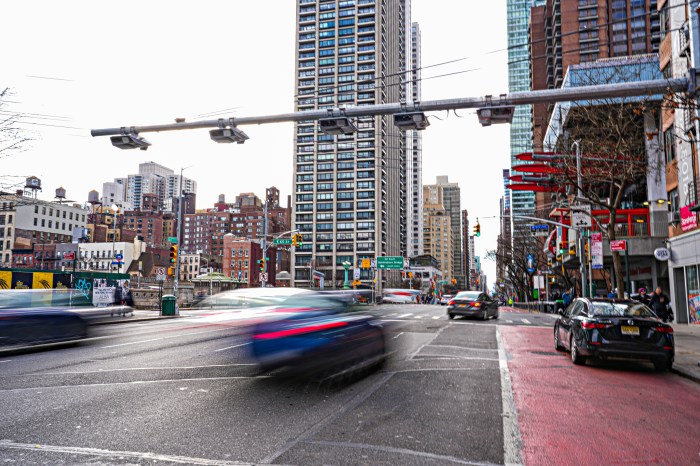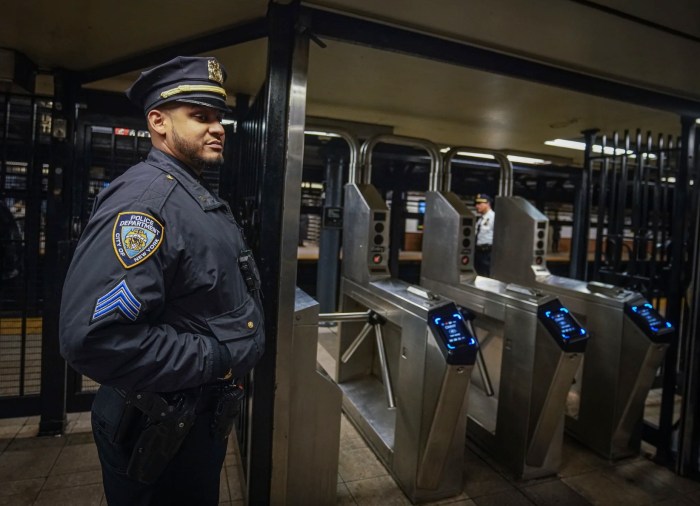
Dockless bicycle sharing has arrived in New York City.
Roughly 150 bikes from companies Pace and Lime are now available to rent in the Rockaways, the first of four pilot zones in the outer boroughs where the city will be testing the service this summer. The Rockaways should soon see up to 400 bikes, with Pace and Lime providing 200 each.
Unlike Citi Bike, dockless bike shares rely on mobile apps to allow riders to find, ride and park bikes. For the pilots, users will be able to rent bikes out from either company for 30-minute increments at $1 per ride [with Pace offering a $29 monthly membership for regular cyclists] — but they will only be allowed to lock their bikes and end their rides within the designated pilot zones.
“This is now the top bike-sharing city in the country. We are very proud of that. It’s amazing; a lot of people wondered if the busiest, most intense city in this country would be the right place for bike sharing. It turned out to be an ideal place for it,” said Mayor Bill de Blasio, who credited his predecessor, Michael Bloomberg, for launching Citi Bike.
The city will continue rolling out the service in Staten Island’s north shore and the Fordham Area of the Bronx later this month, according to the city’s Department of Transportation. Dockless service will also come to Coney Island, Brooklyn, later this year.
The de Blasio administration views the pilots as a way to bring bike sharing to the farther reaches of the city, where Citi Bike doesn’t serve. Motivate, Citi Bike’s parent company, and the city were at one point negotiating a potential five-borough expansion, but the de Blasio administration opted instead to try out the newer, emerging dockless model. Motivate is still part of the pilot, and will provide dockless bikes in Coney Island. Companies JUMP and ofo have also been selected.
The city will get anonymized trip data from the companies, which DOT Commissioner Polly Trottenberg said could be used to build out better bike infrastructure in the pilot areas. She said the number of bikes and pilot zones could be expanded if the testing proves successful.
“One of the reasons we’re interested in this technology is that it’s very nimble to deploy,” Trottenberg said. “One thing I think no one can deny is that the dock systems take a long time to build out the infrastructure. In a city as large as New York, it may make sense to have both types of systems. I don’t think we’ve figured out the answer yet.”
The trials reflect the growing and ever-changing bike share industry. While Citi Bike has been one of the most successful bike share services in the world, since its launch in 2012 the landscape of the industry has changed dramatically. Instead of investing in docks and negotiating spaces with cities, companies have started moving toward dockless service with lower cost overhead and planning investment, with mixed results.
Mayor Bill de Blasio on a bicycle. pic.twitter.com/w5kLD2vnJj
— Vincent Barone (@vinbarone) July 13, 2018
Critics believe the city should just invest and expand proven, reliable Citi Bike service. They view the dockless tests as a way for de Blasio to avoid nasty arguments over the removal of parking spaces for docks in the more car-dependent outer boroughs and believe there is a greater opportunity for riders to abuse the dockless bikes and public space.
The dockless companies believe they can provide cheaper service to riders that allows them to park conveniently right near their destinations.
The bike share companies will be hiring staff, “rebalancers” and maintenance workers to make sure bikes are functional and placed in appropriate locations. Many of the companies either provide incentives, like free rides, to users who dock their bikes in preferred locations, or issue fees to riders who dump bikes irresponsibly, like on private property. Pace, like JUMP, requires riders to lock their bikes to a fixed object—like any other privately owned bike.
“We encourage and also require that our bikes are locked to something: bike racks, sign posts — whatever is legal in the city,” said Dave Reed, market manager at Pace, which has been operating bike-share systems for 10 years. “We want to make sure that we’re keeping our pedestrian right of way and our walkways clear.”
But the companies will have their own artificial challenges from the city. Limiting each pilot area to a finite number of bikes can present logistical hurdles and service shortages, several officials at the companies said, and creating pilot zones limit the number of meaningful trips a commuter could take.




































